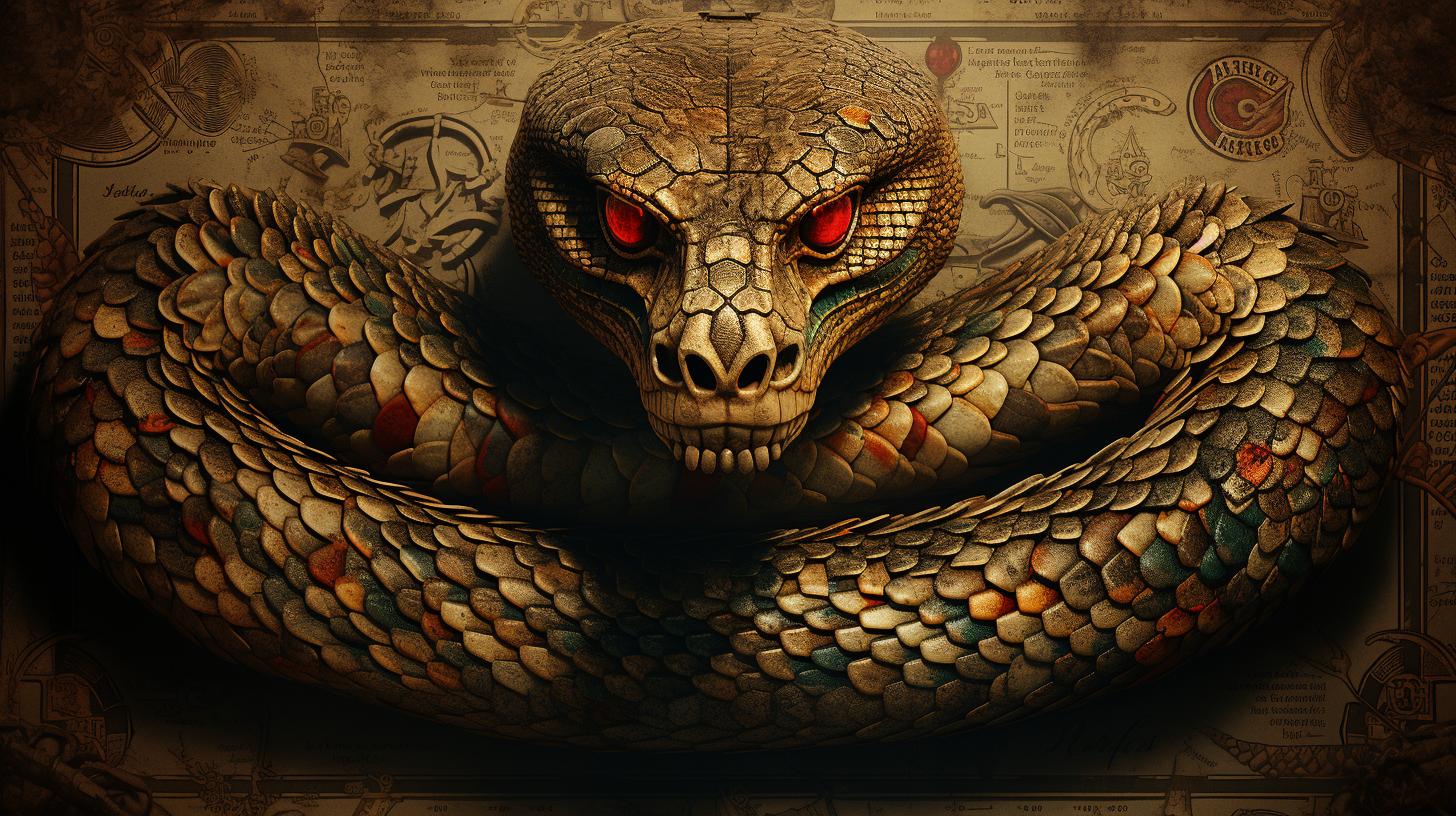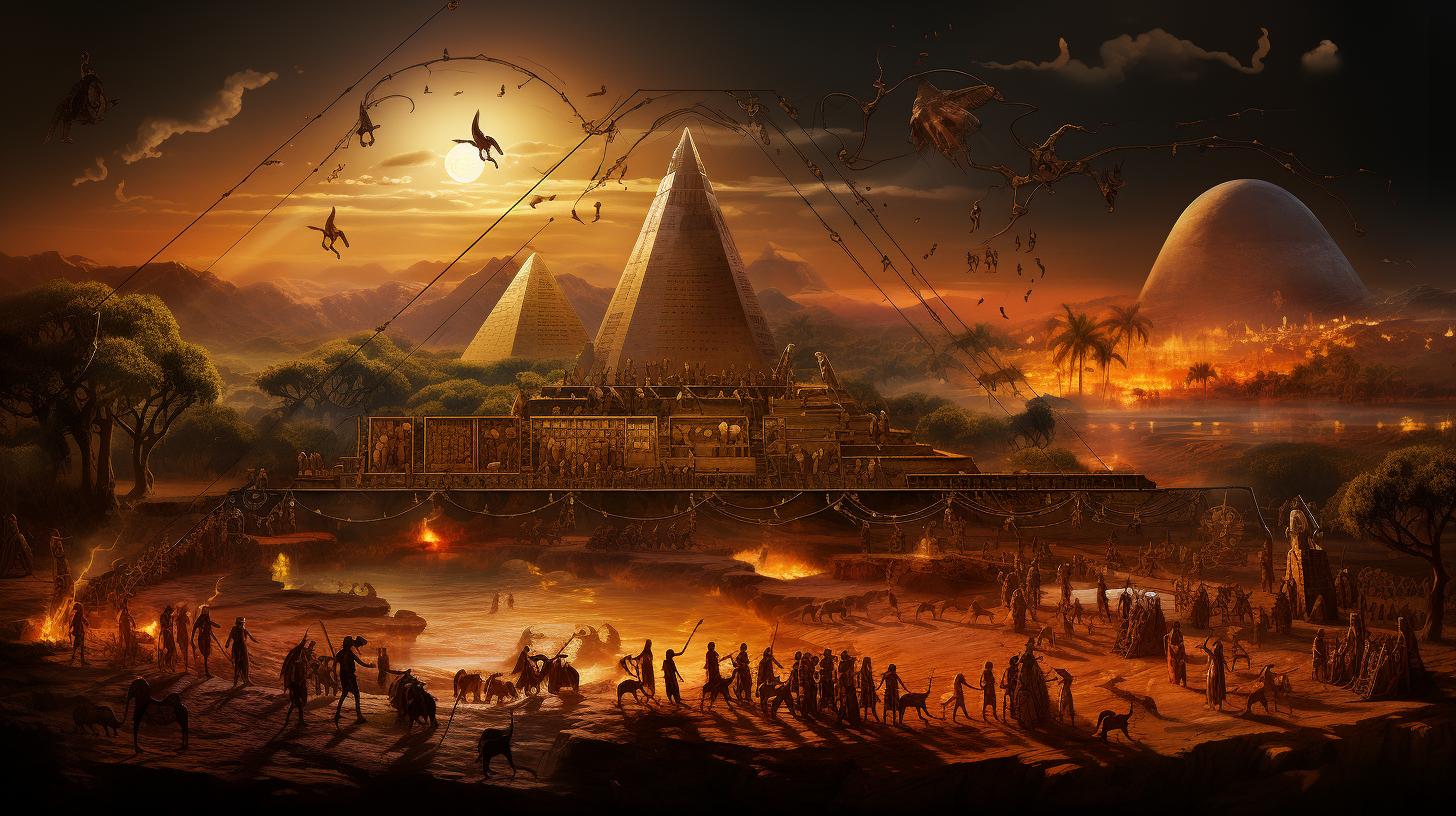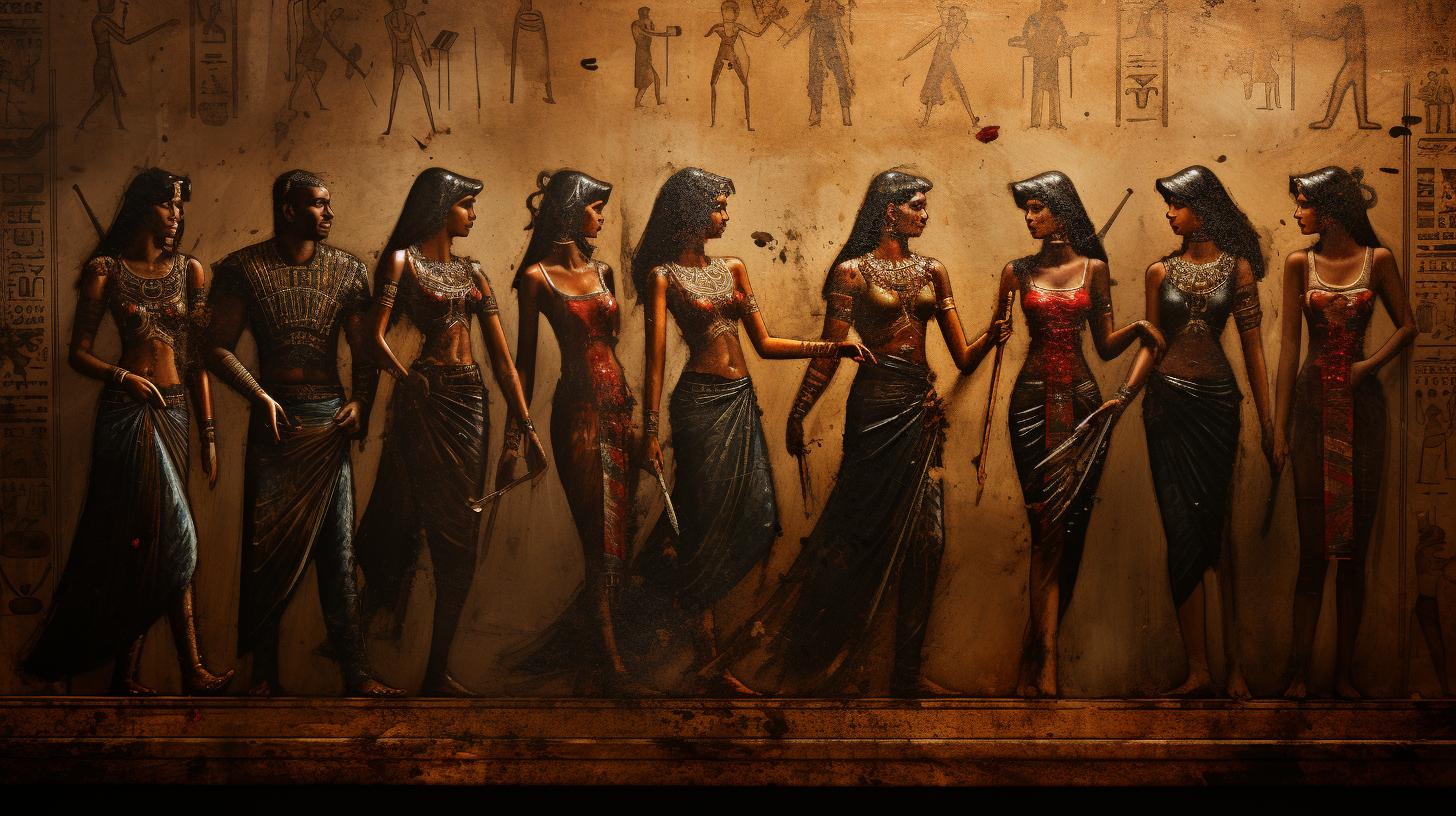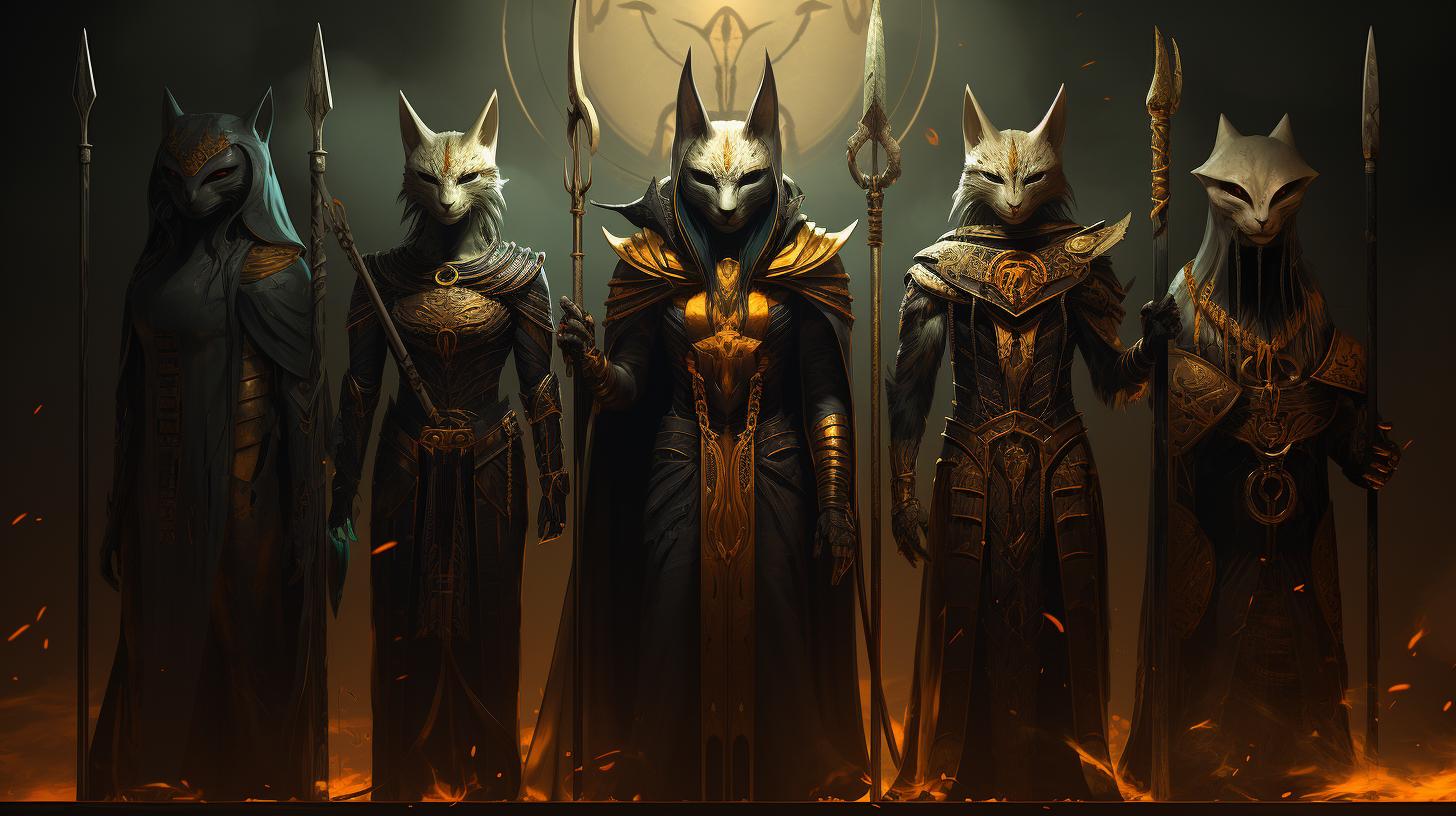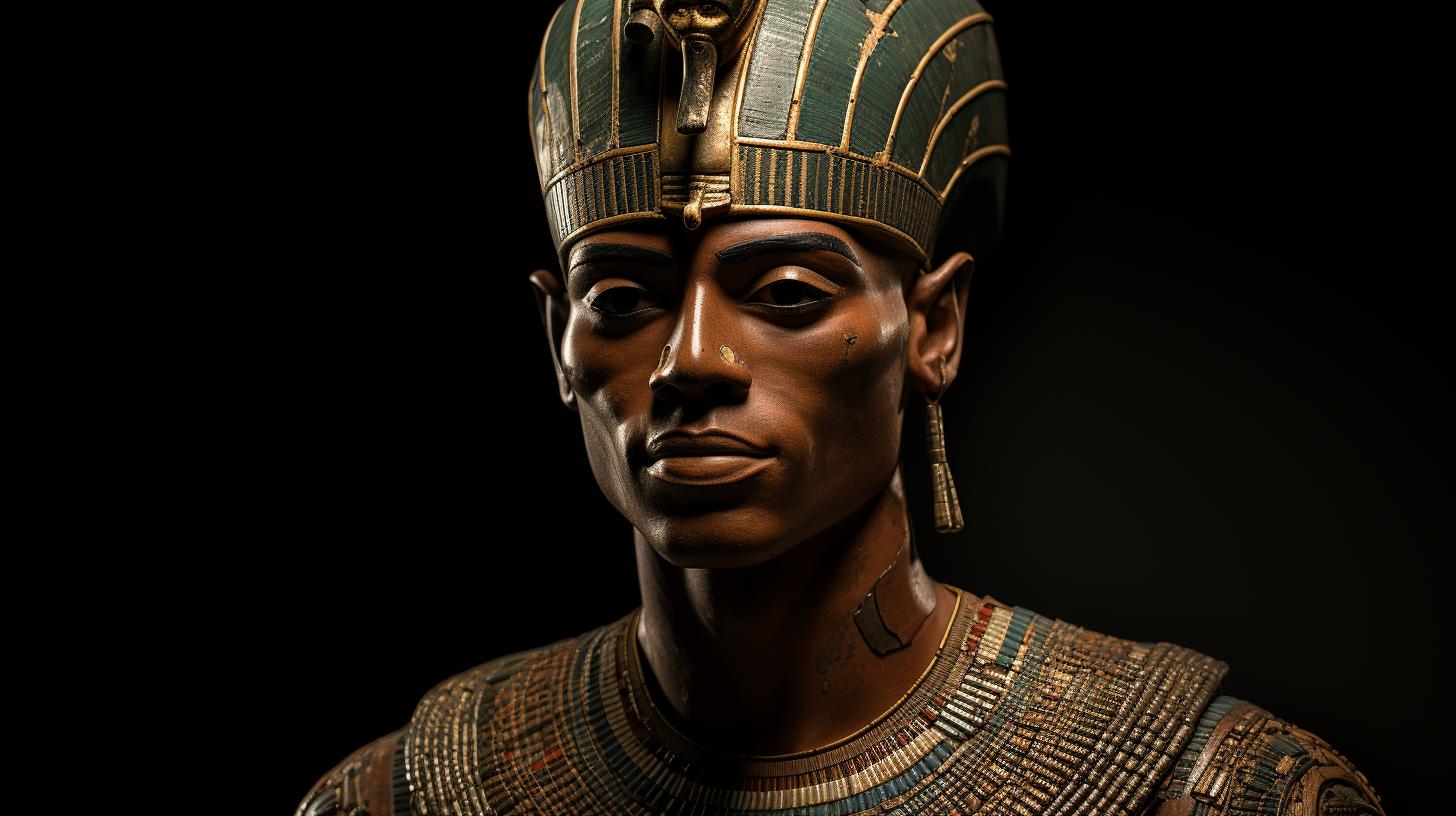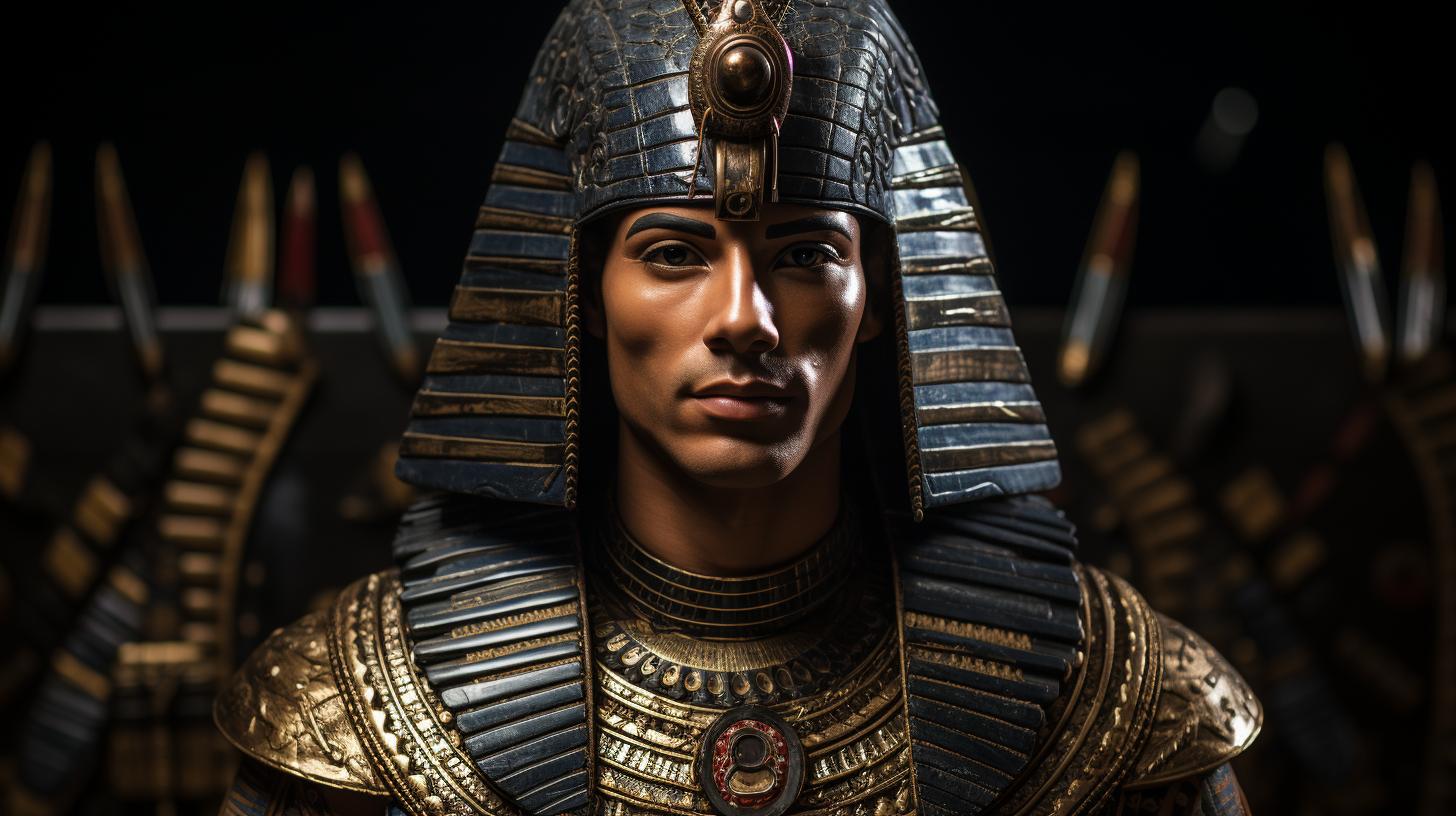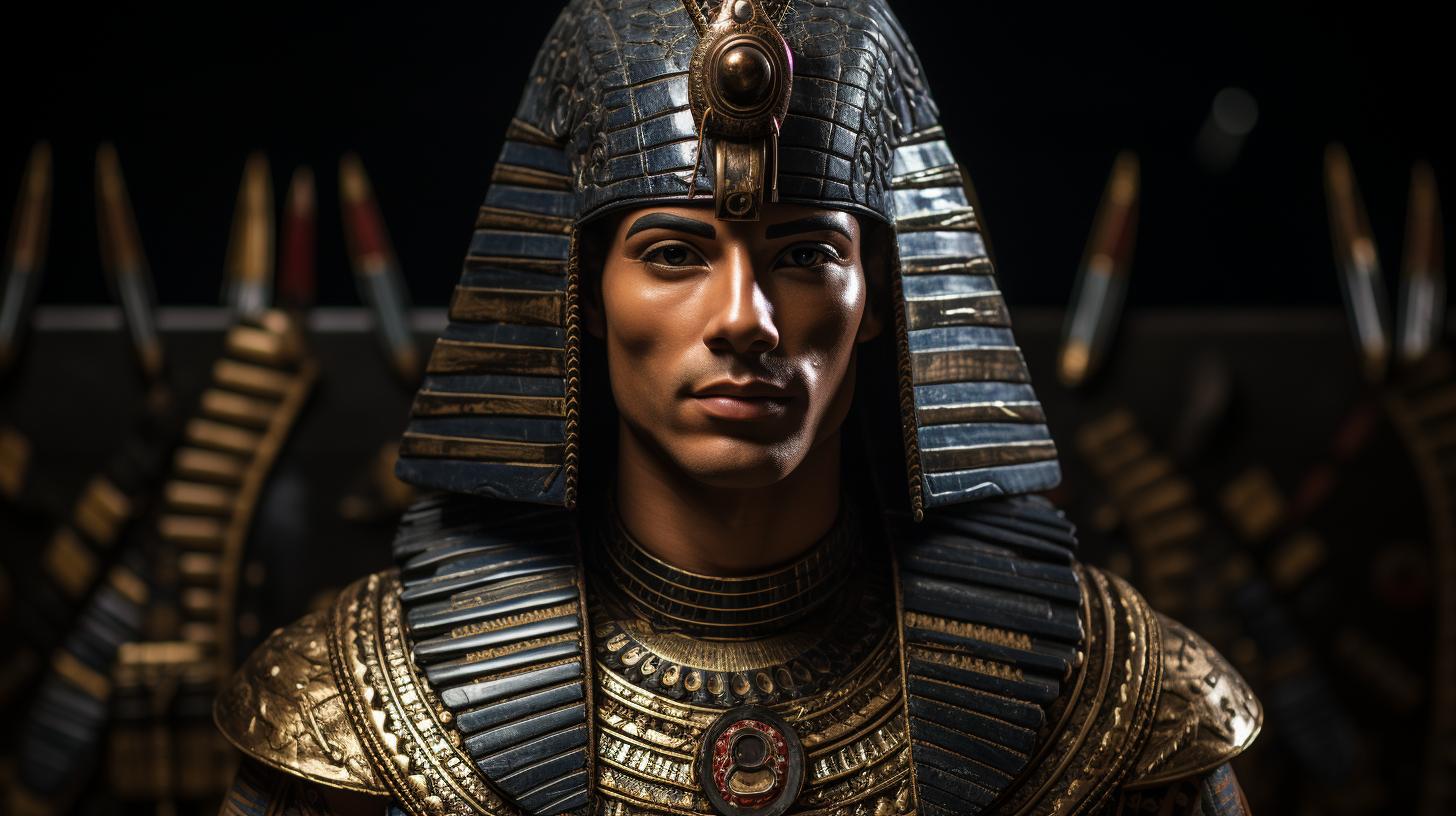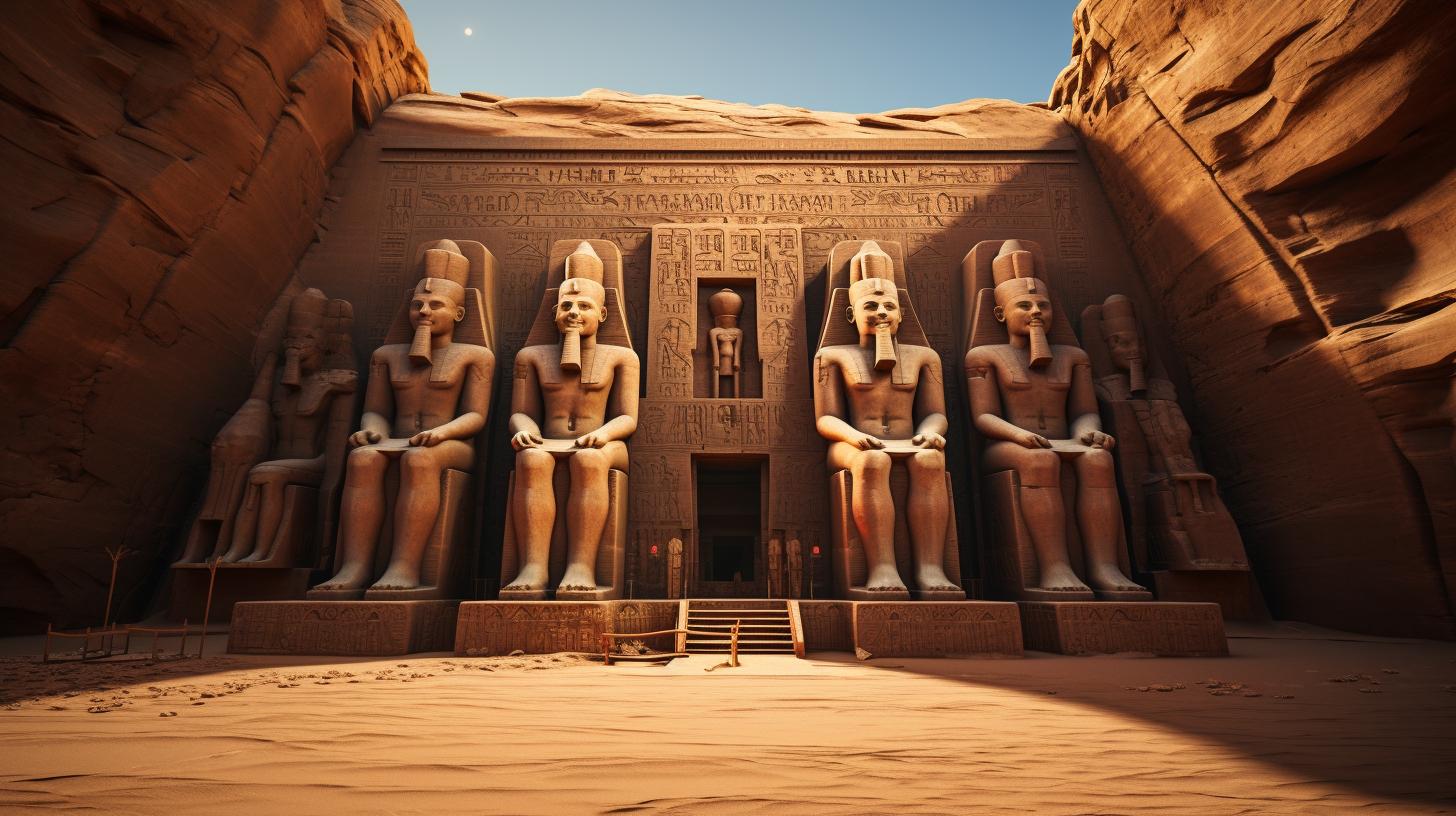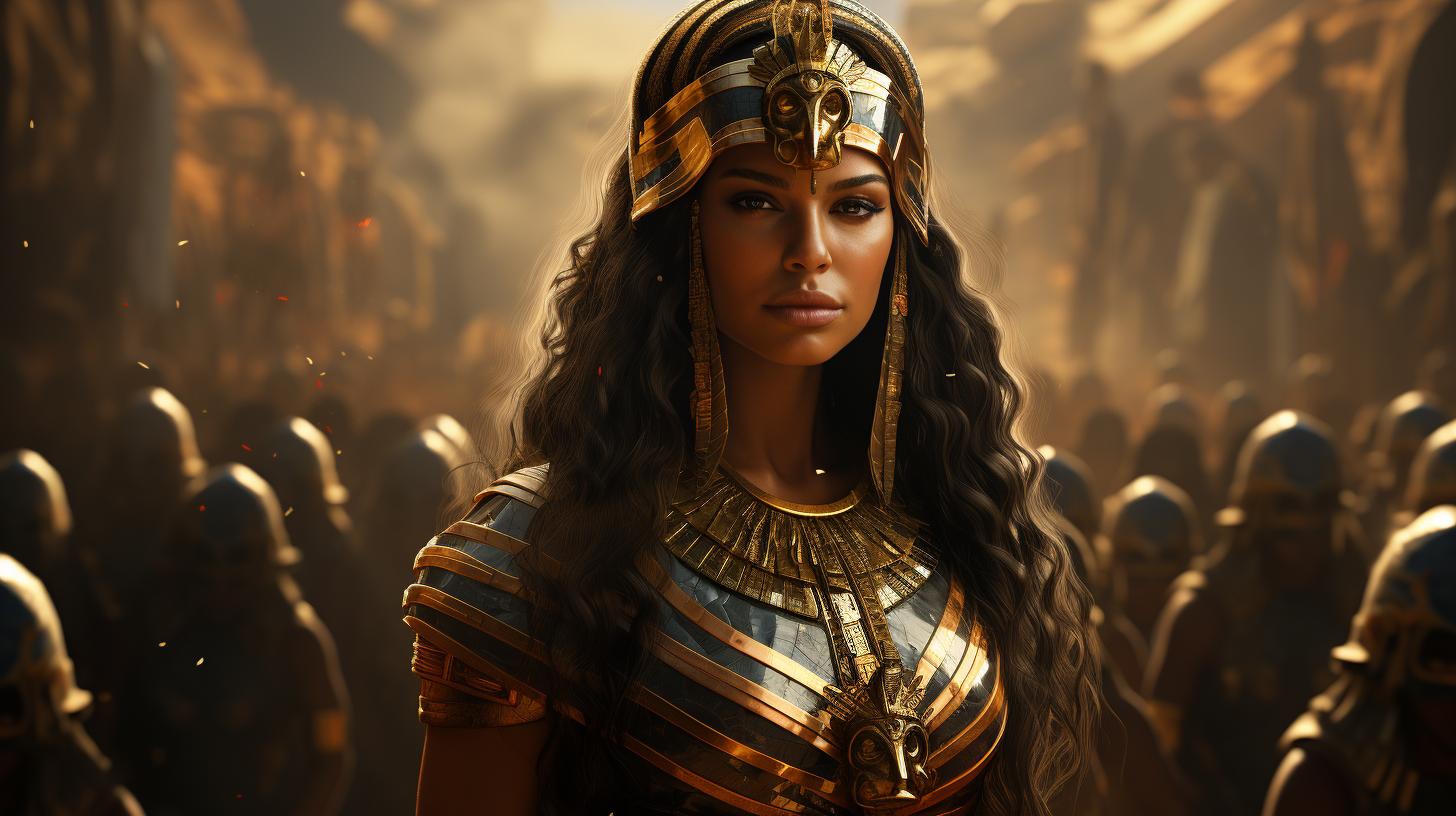‘Nehebkau: The Egyptian God of the Afterlife’
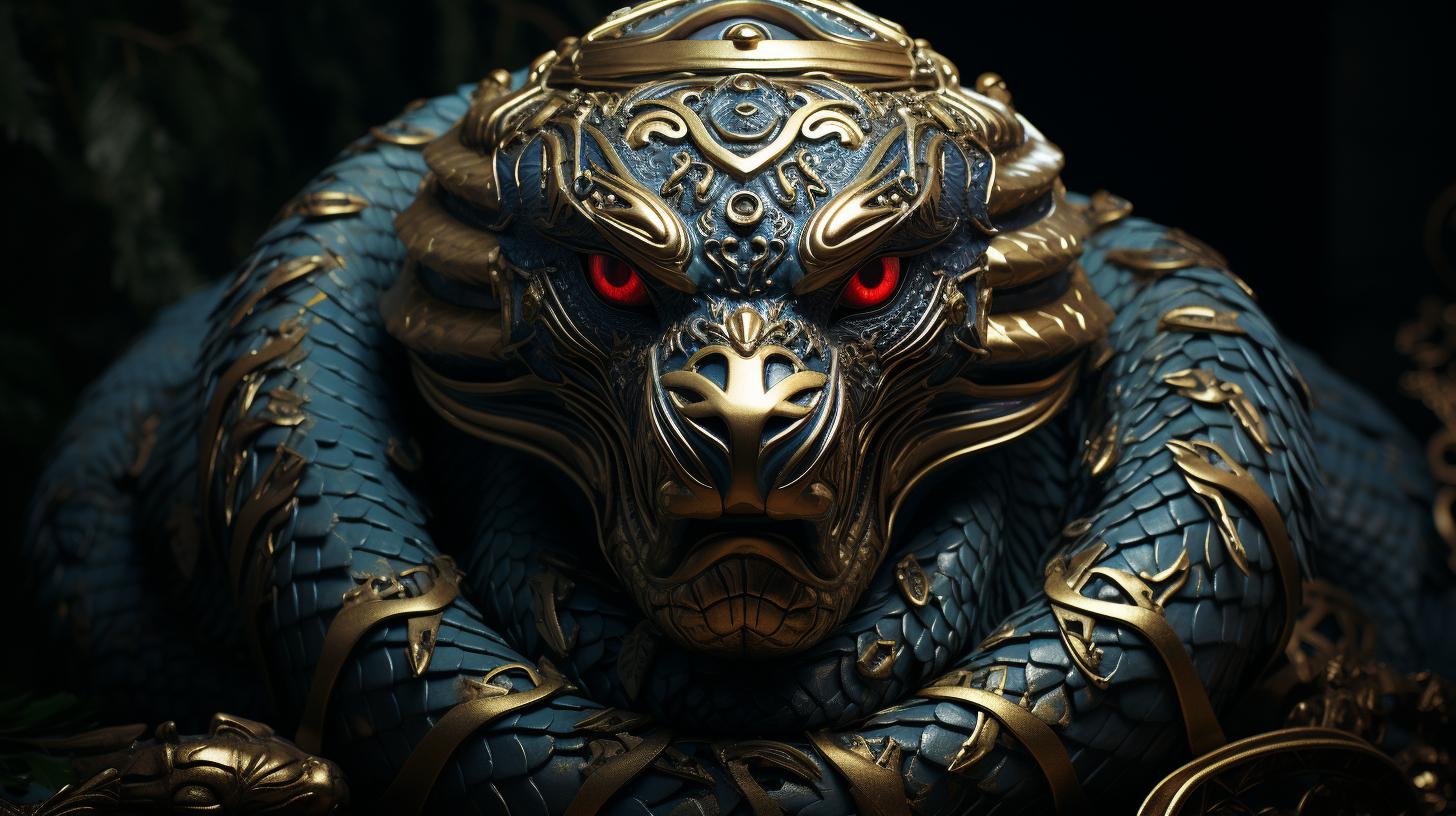
Nehebkau, the ancient Egyptian god, holds a significant role in the afterlife and is associated with the judgment of the deceased. With connections to the underworld and serving as a protector of Osiris, Nehebkau plays a crucial part in Egyptian funerary practices.
Depicted as a powerful serpent, this deity’s symbolism is evident in various artistic representations. While debates and interpretations surround Nehebkau’s existence, its legacy in ancient Egypt remains influential and continues to shape our understanding of Egyptian mythology.
Nehebkau in Egyptian Mythology
Nehebkau, a significant deity in ancient Egyptian mythology, holds a prominent role in various aspects of Egyptian culture and belief systems. Through exploring Nehebkau’s role in the afterlife, relationship with other Egyptian gods, and associations with the underworld, we gain insights into the complexities of this divine serpent figure.
Nehebkau’s Role in the Afterlife
Within Egyptian mythology, Nehebkau assumes a crucial role in the realm of the afterlife. As a powerful serpent god, Nehebkau is responsible for judging and providing the deceased with their “ka,” the aspect of the soul that distinguishes the living from the dead.
Initially viewed as a malevolent spirit, Nehebkau transforms into a benevolent deity associated with guiding souls in their journey beyond death.
Nehebkau’s Relationship with Other Egyptian Gods
Nehebkau’s intricate connections with other Egyptian gods enrich the tapestry of Egyptian mythology. While his parentage remains uncertain, some accounts suggest that Nehebkau is the offspring of deities such as Serket, Renenutet, or Geb. Additionally, Nehebkau’s emergence from the earth signifies his primordial nature and eternal presence.
His association with divinities like Re and Atum further solidifies Nehebkau’s significance in the pantheon.
Nehebkau’s Associations with the Underworld
The underworld holds a vital place in Egyptian beliefs, and Nehebkau plays an imperative role in this realm. Often depicted as a malevolent serpent devouring human souls in the afterlife, Nehebkau becomes an adversary of the sun god Re.
However, with time, he earns a more benevolent persona. Nehebkau guards the gates of the underworld, ensuring the safe passage of souls and protecting the deceased on their eternal journey.
Nehebkau in Ancient Egyptian Texts and Spells
Nehebkau’s presence is prominent in the ancient Egyptian texts and spells, providing valuable insights into the beliefs and practices surrounding this enigmatic deity.
Nehebkau in the Pyramid Texts
The Pyramid Texts, dating back to the Old Kingdom, feature Nehebkau in various contexts. References to this serpent god appear in spells related to the protection and guidance of pharaohs in their journey to the afterlife.
Nehebkau is invoked to provide spiritual elevation and ensure a smooth transition into the realm of the gods.
Nehebkau in the Coffin Texts
In the Middle Kingdom, Nehebkau’s significance expanded further within the Coffin Texts. These funerary texts contained spells and rituals to assist the deceased in their journey through the afterlife. Nehebkau is often invoked to provide protection from evil spirits, serpents, and other malevolent forces encountered in the underworld.
Magical Spells and Rituals Involving Nehebkau
Beyond the specific texts, Nehebkau’s presence also extends to a wide range of magical spells and rituals in ancient Egypt. These rituals often sought the benevolent influence and power of Nehebkau to safeguard against spiritual dangers and ensure a successful journey in the afterlife.
Different invocations and offerings were made to seek his favor and protection.
Overall, Nehebkau’s role in ancient Egyptian texts and spells illustrates his importance in the esoteric realm of funerary practices and spiritual protection.
Through the Pyramid Texts, Coffin Texts, and various magical spells, Nehebkau’s influence in guiding and safeguarding the deceased on their journey to the afterlife becomes evident.
Nehebkau and Egyptian Funerary Practices
Nehebkau, the ancient Egyptian god, played a significant role in the funerary practices of the civilization.
Within the realm of funerary rituals, Nehebkau held multiple responsibilities and was revered as a protector of the deceased.
Nehebkau’s Role in Funerary Rituals
In Egyptian funerary rituals, Nehebkau was believed to guide and assist the souls of the deceased on their journey to the afterlife. As a powerful serpent deity, he played a crucial role in providing spiritual support and guidance during this transitional period.
Nehebkau’s presence during funerary rituals provided assurance to the Egyptians that the soul of the deceased would navigate the treacherous realms of the afterlife successfully. His association with protection and guidance made him a key figure in ensuring a safe passage for the departed.
Nehebkau’s Protection of the Deceased
One of Nehebkau’s primary roles in Egyptian funerary practices was to safeguard the deceased from malevolent forces. As a deity associated with serpents, his venomous nature was believed to ward off evil spirits and protect the deceased from harm.
Depictions of Nehebkau often show him coiled around the deceased, acting as a shield against any supernatural threats they might encounter in the afterlife. It was believed that his presence offered both physical and spiritual protection, ensuring the safety and well-being of the deceased in their journey beyond the earthly realm.
Nehebkau’s Connection to the Book of the Dead
The Book of the Dead, a collection of funerary texts, held immense importance in ancient Egyptian burial practices. Nehebkau was closely associated with this sacred text, particularly in relation to the judgment of the deceased and their journey through the afterlife.
According to Egyptian beliefs, Nehebkau would accompany the deceased to the court of Ma’at, where their heart would be weighed against the feather of truth. As a guardian and judge, Nehebkau’s presence ensured a fair assessment of the deceased’s moral and ethical conduct during their lifetime.
Furthermore, Nehebkau’s connection to the Book of the Dead extended to providing sustenance to the deceased in the form of the “ka,” their spiritual life force. It was believed that Nehebkau would nourish the souls of the departed, granting them the energy and sustenance necessary for their existence in the afterlife.
In conclusion, Nehebkau’s role in Egyptian funerary practices was multifaceted. As a guardian, guide, and provider, he played a crucial part in ensuring the safe passage, protection, and sustenance of the deceased in their journey through the afterlife.
Nehebkau: Beliefs and Worship in Ancient Egypt
In ancient Egypt, Nehebkau held a significant place in the religious beliefs and worship practices of the people. The god was honored through various festivals and ceremonies that celebrated his power and benevolence.
One such festival dedicated to Nehebkau involved processions, rituals, and offerings to express devotion and gratitude.
Nehebkau’s Festivals and Ceremonies
Nehebkau’s festivals were marked by vibrant celebrations and rituals held in sacred temples and spaces. These events brought the community together to pay homage to the deity and seek his blessings.
During these festivals, priests performed elaborate ceremonies, including music, dances, and offerings of food and drink. The rituals aimed to invoke Nehebkau’s presence and ensure his favor and protection for the people.
Nehebkau’s Role in Egyptian Kingship
Nehebkau’s association with Egyptian kingship is evident in the belief that he played a crucial role in the divine authority of the pharaoh. The king was considered a representative of the gods on Earth, and Nehebkau offered his guidance and protection to ensure the monarch’s prosperous rule.
It was believed that the presence of Nehebkau strengthened the king’s legitimacy and affirmed his connection to the divine realm.
Popular Beliefs and Devotion to Nehebkau
- Nehebkau was widely revered and held a prominent place in the hearts and minds of the ancient Egyptians.
- Many believed that devotion to Nehebkau ensured a smooth transition into the afterlife, where his care and support were vital.
- Individuals, both commoners and nobility, expressed their devotion through personal prayers, offerings, and rituals focused on seeking Nehebkau’s favor and protection.
- Artifacts and amulets featuring Nehebkau’s imagery were treasured possessions believed to bring good fortune and spiritual connection to the god.
Nehebkau’s influence reached every aspect of Egyptian society, portraying him as a beloved and respected deity whose worship was deeply ingrained in the cultural and religious fabric of Egypt.
Nehebkau’s Symbolism and Iconography
Nehebkau’s symbolism and iconography hold significant meaning in ancient Egyptian culture. The depictions of this deity, particularly in relation to snakes, convey various messages and reflect the beliefs and values of the Egyptians.
The Snake Symbolism in Nehebkau’s Depictions
Snakes played a crucial role in Egyptian mythology, representing both positive and negative aspects. In the case of Nehebkau, the snake symbolism emphasizes his association with the primordial forces and the cycle of life and death.
The serpent’s ability to shed its skin and renew itself became a representation of resurrection and transformation.
Nehebkau’s depictions often showcase a serpent with its body coiled or entwined, symbolizing the eternal nature of this deity.
The snake’s sinuous form also represents the cosmic forces and the duality of existence. It signifies the balance between chaos, embodied by the underworld, and order, represented by Ma’at, the concept of justice and balance.
Nehebkau’s Representations in Art and Architecture
Artistic representations of Nehebkau can be found in various mediums, including temples, tombs, and amulets. In temple reliefs, Nehebkau is depicted alongside other deities, emphasizing his importance in the Egyptian pantheon.
The intricate details of these depictions showcase the skill and craftsmanship of ancient Egyptian artists.
Architectural elements also feature Nehebkau’s symbolism. For example, columns in temples might be carved with intertwined snakes, representing Nehebkau’s protective and regenerative powers.
Additionally, amulets in the form of a coiled serpent were worn as symbols of protection and good fortune.
Nehebkau’s representations in art and architecture not only serve as a visual homage to this deity but also as a reminder of his role in Egyptian religious beliefs and practices.
Nehebkau and Related Deities
Nehebkau, the ancient Egyptian god, shares intricate connections with several other deities in Egyptian mythology. These relationships shed light on Nehebkau’s significance and role within the divine pantheon.
Nehebkau’s Relationship with Serket and Renenutet
Serket, the goddess of healing venomous bites and stings, is sometimes identified as Nehebkau’s mother.
The protective nature of Serket aligns with Nehebkau’s role as a guardian and guide in the afterlife. Renenutet, the goddess of nourishment and fertility, is also occasionally linked to Nehebkau, symbolizing his provision of sustenance to the deceased souls.
Nehebkau’s Connections to Atum and Geb
Nehebkau’s origins can be traced back to Atum, the creator god in Egyptian mythology. It is believed that Nehebkau emerged from the earth or was born as a result of Atum’s divine actions.
Additionally, there are references to Nehebkau as the child of Geb, the god of the earth. These associations emphasize the primordial and eternal nature of Nehebkau.
Nehebkau’s Association with Horus and Other Gods
Horus, the falcon-headed god and one of the most significant deities in Egyptian mythology, is occasionally linked to Nehebkau.
Their connection highlights Nehebkau’s role in the celestial realm and his association with the solar aspects of Horus. Furthermore, Nehebkau’s interactions with other gods, such as Osiris and Ra, further demonstrate his prominent position within the divine hierarchy.
Nehebkau’s Legacy in Ancient Egypt
Influence and Worship of Nehebkau Beyond Ancient Egypt
Nehebkau’s influence extended beyond the boundaries of ancient Egypt, resonating with neighboring civilizations and leaving a lasting impact. His distinctive role as a deity associated with the afterlife and judgment inspired similar beliefs in surrounding cultures.
Many ancient Near Eastern civilizations, such as the Canaanites and Mesopotamians, adopted and adapted elements of Egyptian mythology, including the worship of Nehebkau. He became integrated into their religious practices, often being syncretized with their own serpent deities.
Additionally, as trade and cultural exchanges flourished, the worship of Nehebkau spread to regions further afield. Nubia, for example, embraced his worship and incorporated his imagery and symbolism into their own religious traditions.
Nehebkau’s Role in Modern Understanding of Egyptian Mythology
Even in modern times, the legacy of Nehebkau endures, greatly shaping our understanding of ancient Egyptian mythology. Scholars and enthusiasts continue to explore and interpret his role and symbolism, contributing to the ever-evolving field of Egyptology.
Nehebkau’s representation as a powerful serpent deity highlights the significance of snakes in Egyptian culture and their connections to the divine. His transformation from a malevolent being to a benevolent and protective figure adds depth to the complexity of ancient Egyptian religious beliefs.
Studying Nehebkau allows us to unravel the intricate layers of Egyptian cosmology, providing insights into their concepts of the afterlife, judgment, and the enduring power of the gods.
Furthermore, Nehebkau’s presence in modern popular culture, including literature, art, and media, perpetuates his influence and ensures that his legacy remains relevant and captivating to audiences around the world.
To sum up,
Nehebkau’s legacy extends beyond ancient Egypt, influencing neighboring civilizations and leaving a lasting impact. His worship spread to other regions, and his role in Egyptian mythology continues to shape modern understanding of ancient beliefs.
Exploring Nehebkau’s significance illuminates the intricate tapestry of Egyptian religious thought and offers valuable insights into the cultural and spiritual landscape of the time.
Nehebkau: Fact or Fiction?
As we delve into the realm of Nehebkau, the ancient Egyptian god, a question arises: is Nehebkau a figure of fact or simply a product of fiction? This enigmatic deity has inspired many interpretations and sparked debates among scholars, leading to diverse perspectives on its existence and significance in Egyptian mythology.
Interpretations and Debates Surrounding Nehebkau
The portrayal of Nehebkau as a serpent deity has led to various interpretations regarding its true nature and role. Some argue that Nehebkau represents a personification of chaos, while others view it as an embodiment of the life force.
These contrasting interpretations have given rise to debates among scholars, with each presenting compelling arguments to support their views.
An ongoing debate surrounds Nehebkau’s connection to other Egyptian gods. Some scholars propose that Nehebkau is closely linked to Serket, Renenutet, and Geb, while others argue for its independent existence.
The lack of concrete evidence from ancient texts has fueled these debates, leaving room for further exploration and analysis.
Evidence and Diversity of Beliefs in Nehebkau
Although definitive evidence regarding Nehebkau’s existence remains elusive, references to this deity can be found in ancient Egyptian texts and rituals. Its inclusion in the Pyramid Texts and Coffin Texts suggests that Nehebkau played a significant role in Egyptian funerary practices and belief systems.
The diversity of beliefs surrounding Nehebkau is evident in the wide range of roles attributed to this deity. From serving as a judge in the afterlife to providing nourishment and protection for the deceased, Nehebkau’s multifaceted nature reflects the complex beliefs and rituals associated with Egyptian funerary practices.
Despite the lack of concrete evidence, the enduring presence of Nehebkau in ancient Egyptian mythology underscores its significance in the cultural and religious fabric of that time. The diverse beliefs and interpretations surrounding Nehebkau continue to intrigue scholars and fuel further research and exploration into this captivating deity.
.

